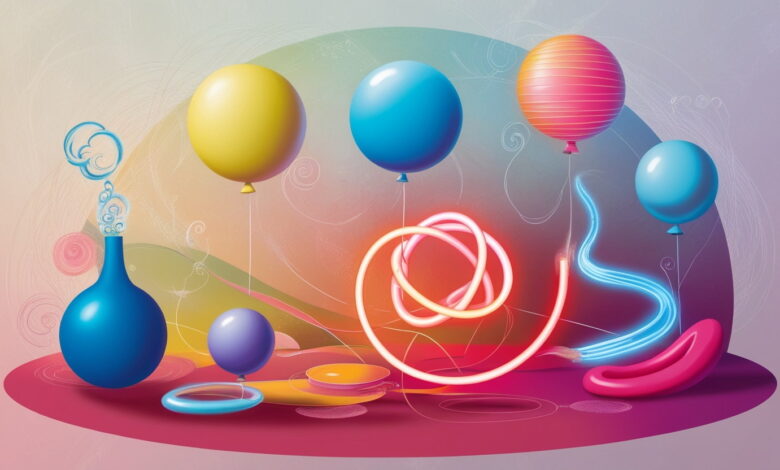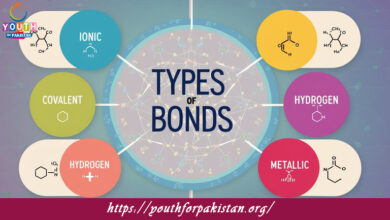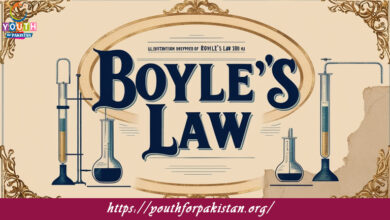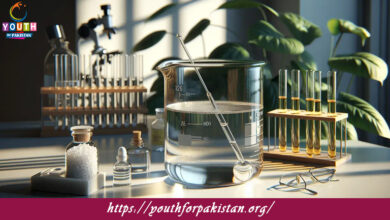Gases MDCAT MCQs with Answers

Welcome to the Gases MDCAT MCQs with Answers. In this post, we have shared Gases Multiple Choice Questions and Answers for PMC MDCAT 2024. Each question in MDCAT Chemistry offers a chance to enhance your knowledge regarding Gases MCQs in this MDCAT Online Test.
Which of the following gases is commonly used in incandescent light bulbs?
a) Helium
b) Neon
c) Argon
d) Hydrogen
What property of gases allows them to mix evenly with other gases?
a) Compressibility
b) Diffusibility
c) Density
d) Viscosity
At constant temperature, if the volume of a gas is halved, the pressure of the gas will:
a) Increase by half
b) Decrease by half
c) Double
d) Remain the same
Which gas law states that the volume of a gas is directly proportional to its temperature at constant pressure?
a) Boyle’s Law
b) Charles’s Law
c) Gay-Lussac’s Law
d) Avogadro’s Law
The law that relates the pressure of a gas to its temperature at constant volume is:
a) Boyle’s Law
b) Charles’s Law
c) Gay-Lussac’s Law
d) Ideal Gas Law
Which of the following gases is used in balloons because it is lighter than air?
a) Helium
b) Nitrogen
c) Carbon dioxide
d) Oxygen
The total pressure exerted by a gas mixture is the sum of the partial pressures of its individual gases. This is known as:
a) Dalton’s Law
b) Boyle’s Law
c) Charles’s Law
d) Avogadro’s Law
Which gas law is used to calculate the volume of a gas when temperature and pressure change?
a) Charles’s Law
b) Boyle’s Law
c) Combined Gas Law
d) Ideal Gas Law
In the ideal gas law, what does the constant R represent?
a) Gas constant
b) Universal temperature
c) Gas pressure
d) Molecular weight
Which of the following conditions will cause real gases to behave more like ideal gases?
a) High pressure and low temperature
b) Low pressure and high temperature
c) High pressure and high temperature
d) Low pressure and low temperature
If the pressure of a gas is 3 atm and its volume is 2 L, what will be its volume if the pressure is increased to 6 atm?
a) 1 L
b) 2 L
c) 3 L
d) 4 L
The kinetic molecular theory of gases assumes that gas molecules:
a) Are in constant random motion
b) Have strong intermolecular forces
c) Are in fixed positions
d) Have significant volume
Which gas law explains the relationship between the rate of effusion and the molecular mass of a gas?
a) Charles’s Law
b) Boyle’s Law
c) Graham’s Law
d) Avogadro’s Law
What happens to the volume of a gas when its temperature is decreased while keeping pressure constant?
a) Volume increases
b) Volume decreases
c) Volume remains constant
d) Volume becomes zero
In a gas mixture, which of the following does Dalton’s Law of Partial Pressures apply to?
a) The temperature of the gas
b) The volume of the gas
c) The total pressure of the gas mixture
d) The individual volume of each gas
Which of the following gases would you expect to have the highest rate of diffusion?
a) Helium
b) Neon
c) Argon
d) Krypton
The volume of 1 mole of an ideal gas at STP (Standard Temperature and Pressure) is:
a) 11.2 L
b) 22.4 L
c) 33.6 L
d) 44.8 L
The pressure of a gas is affected by:
a) The volume of the container
b) The color of the gas
c) The molecular weight of the gas
d) The presence of other gases
Which gas is commonly used in neon signs due to its characteristic color?
a) Argon
b) Krypton
c) Neon
d) Helium
The term “effusion” in gas laws refers to:
a) The escape of gas molecules through a small hole
b) The mixing of gases
c) The pressure of a gas
d) The volume of a gas
The ideal gas law assumes that:
a) Gas molecules occupy significant volume
b) There are strong intermolecular forces
c) Gas molecules have no volume and no interactions
d) Gas molecules are in fixed positions
The rate of diffusion of a gas is inversely proportional to the square root of its:
a) Pressure
b) Temperature
c) Volume
d) Molecular mass
If the temperature of a gas is doubled at constant pressure, what happens to the volume?
a) It doubles
b) It halves
c) It remains the same
d) It quadruples
According to Graham’s Law, which gas would effuse faster at the same temperature and pressure?
a) A gas with a higher molecular mass
b) A gas with a lower molecular mass
c) A gas with a higher density
d) A gas with a lower temperature
Which gas is often used as a coolant due to its low boiling point?
a) Hydrogen
b) Neon
c) Nitrogen
d) Oxygen
The gas law that relates the pressure and volume of a gas is known as:
a) Charles’s Law
b) Boyle’s Law
c) Gay-Lussac’s Law
d) Avogadro’s Law
Which of the following is NOT a postulate of the kinetic molecular theory?
a) Gas molecules are in constant motion
b) Gas molecules have no volume
c) Gas molecules interact strongly with each other
d) Collisions between gas molecules are perfectly elastic
What does Avogadro’s Law state about the volume of gas and the number of moles at constant temperature and pressure?
a) The volume of a gas is inversely proportional to the number of moles
b) The volume of a gas is directly proportional to the number of moles
c) The volume of a gas is independent of the number of moles
d) The number of moles is inversely proportional to the temperature
Which of the following gases is used in fire extinguishers?
a) Carbon dioxide
b) Hydrogen
c) Nitrogen
d) Helium
In which situation will real gases most closely follow the ideal gas law?
a) At high pressure and low temperature
b) At low pressure and high temperature
c) At high temperature and high pressure
d) At low temperature and high pressure
What happens to the pressure of a gas if its volume is increased while keeping temperature constant?
a) Pressure increases
b) Pressure decreases
c) Pressure remains unchanged
d) Pressure becomes zero
Which gas law is represented by the equation PV = nRT?
a) Boyle’s Law
b) Charles’s Law
c) Ideal Gas Law
d) Avogadro’s Law
Which of the following gases is commonly used in scuba tanks?
a) Helium
b) Nitrogen
c) Oxygen
d) Argon
What does Charles’s Law describe about the relationship between temperature and volume?
a) Volume is inversely proportional to temperature
b) Volume is directly proportional to temperature
c) Volume is independent of temperature
d) Volume and temperature have no relationship
Which of the following gases has the highest density at the same temperature and pressure?
a) Hydrogen
b) Nitrogen
c) Oxygen
d) Argon
The volume of a gas is directly proportional to the number of moles at constant temperature and pressure according to:
a) Boyle’s Law
b) Charles’s Law
c) Avogadro’s Law
d) Gay-Lussac’s Law
Which gas is known for its use in creating a vacuum?
a) Neon
b) Helium
c) Hydrogen
d) Argon
Which of the following statements about gas particles is correct according to the kinetic molecular theory?
a) Gas particles have strong intermolecular forces
b) Gas particles have negligible volume
c) Gas particles are at rest
d) Gas particles occupy a fixed volume
Which of the following gases is most commonly used in welding?
a) Argon
b) Helium
c) Neon
d) Hydrogen
The diffusion rate of a gas is inversely proportional to the square root of its:
a) Pressure
b) Molecular mass
c) Temperature
d) Volume
If you are interested to enhance your knowledge regarding Physics, Chemistry, Computer, and Biology please click on the link of each category, you will be redirected to dedicated website for each category.





